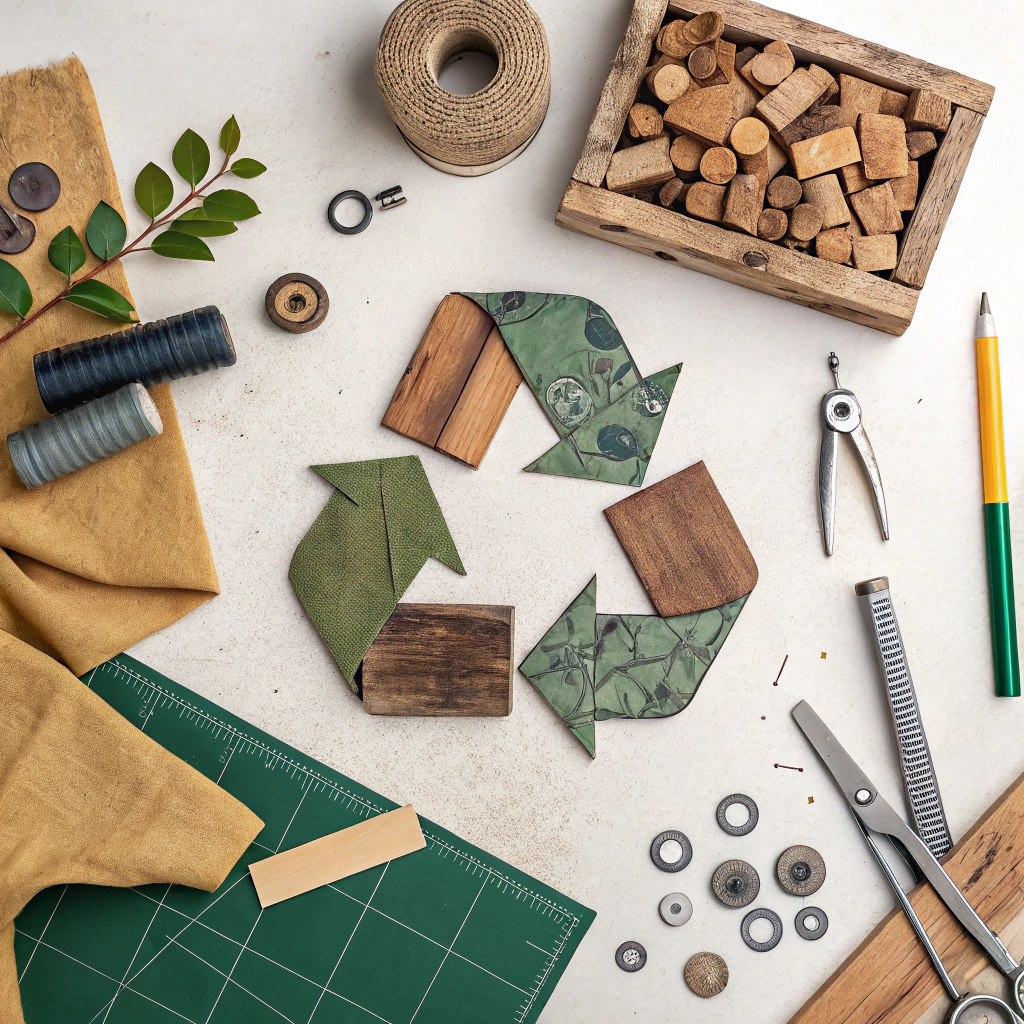In a world increasingly aware of the environmental impact of waste, the concept of DIY art from reclaimed materials has emerged as a creative and sustainable solution. This guide will explore how you can transform discarded items into beautiful art pieces, all while contributing to a zero-waste lifestyle. Whether you’re an experienced artist or a curious beginner, this article will provide you with the inspiration and practical steps needed to embark on your own artistic journey using reclaimed materials.
Why This Topic Is Worth Reading

Creating art from reclaimed materials is not just a trend; it’s a movement towards sustainability. By repurposing items that would otherwise end up in landfills, you are actively participating in reducing waste and promoting environmental consciousness. This practice not only benefits the planet but also allows for unique artistic expression.
Moreover, DIY art projects can be incredibly cost-effective. Instead of purchasing expensive art supplies, you can find beauty in everyday objects. This approach encourages creativity and resourcefulness, making art accessible to everyone, regardless of budget.
Finally, engaging in DIY art can be therapeutic. The process of creating something new from something old can be a fulfilling and meditative experience, providing a sense of accomplishment and joy.
Key Highlights or Must-Know Points
- Reclaimed materials can include wood, metal, glass, fabric, and plastic.
- DIY art projects promote sustainability and reduce waste.
- Creating art from reclaimed materials can be cost-effective and accessible.
- Engaging in art can provide therapeutic benefits and enhance creativity.
Getting Started with DIY Art from Reclaimed Materials
- Gather Your Materials: Start by collecting items that you no longer use or that would typically be discarded. Look for old furniture, broken tools, scrap metal, or even fabric remnants. The key is to see potential in what others might consider trash.
- Choose Your Project: Decide what type of art you want to create. This could be anything from sculptures and wall art to functional pieces like furniture or home decor. Research different projects online for inspiration.
- Prepare Your Workspace: Set up a clean, organized area where you can work on your projects. Ensure you have the necessary tools, such as glue, paint, scissors, and safety equipment if needed.
- Start Creating: Begin assembling your materials according to your chosen project. Don’t be afraid to experiment and let your creativity flow. Remember, the beauty of reclaimed art lies in its uniqueness.
- Finish and Display: Once your piece is complete, find a suitable place to display it. This could be in your home, garden, or even at a local art show. Sharing your work can inspire others to embrace the zero-waste movement.
Extra Tips, Notes, or Warnings
- Safety First: Always wear protective gear when working with sharp or heavy materials. Safety goggles and gloves can prevent injuries.
- Be Creative: Don’t limit yourself to traditional art forms. Consider functional art, like turning an old ladder into a bookshelf or using glass bottles as garden decor.
- Join a Community: Look for local workshops or online forums where you can share ideas and get feedback on your projects. Engaging with others can enhance your skills and inspire new creations.
- Document Your Process: Take photos of your projects from start to finish. This not only helps you track your progress but can also serve as inspiration for others.
Common Questions Answered
What types of materials can I use for DIY art? You can use a wide variety of reclaimed materials, including wood, metal, glass, fabric, and plastic. The possibilities are endless!
Do I need special tools to create art from reclaimed materials? While some projects may require specific tools, many can be completed with basic supplies like glue, scissors, and paint. Start simple and expand your toolkit as needed.
Can I sell my reclaimed art? Yes! Many artists successfully sell their reclaimed art at local markets, online platforms, or through social media. Just ensure that your pieces are safe and well-crafted.
Is it difficult to create art from reclaimed materials? The difficulty level varies depending on the project. However, the beauty of DIY art is that it allows for experimentation and personal expression, so there’s no right or wrong way to create.
Final Thoughts
Creating DIY art from reclaimed materials is a rewarding endeavor that not only fosters creativity but also promotes a sustainable lifestyle. By transforming discarded items into beautiful works of art, you contribute to a zero-waste movement while expressing your unique artistic vision. So gather your materials, unleash your creativity, and start making a positive impact on both your life and the environment.
Get Involved
We encourage you to try your hand at creating art from reclaimed materials! Share your projects with us and let us know how your journey unfolds. For more wonderful content and inspiration, visit Mind of Griff. We’d love to hear your thoughts and see your creations!
Leave a Reply